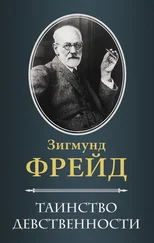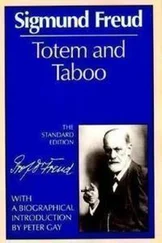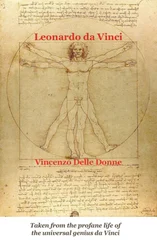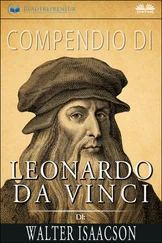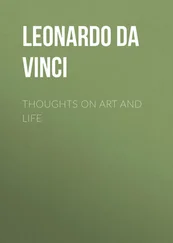Let the reader be patient for a while and not flare up with indignation and refuse to follow psychoanalysis because in its very first applications it leads to an unpardonable slander of the memory of a great and pure man. For it is quite certain that this indignation will never solve for us the meaning of Leonardo's childhood phantasy; on the other hand, Leonardo has unequivocally acknowledged this phantasy, and we shall therefore not relinquish the expectation—or if you prefer the preconception—that like every psychic production such as dreams, visions and deliria this phantasy, too, must have some meaning. Let us therefore lend our unprejudiced ears for a while to psychoanalytic work which after all has not yet uttered the last word.
The desire to take the male member into the mouth and suck it, which is considered as one of the most disgusting of sexual perversions, is nevertheless a frequent occurrence among the women of our time—and as shown in old sculptures was the same in earlier times—and in the state of being in love seems to lose entirely its disgusting character. The physician encounters phantasies based on this desire, even in women who did not come to the knowledge of the possibility of such sexual gratification by reading V. Krafft–Ebing's Psychopathia Sexualis or through other information. It seems that it is quite easy for the women themselves to produce such wish–phantasies. [26] Cf. here the "Bruchstück einer Hysterieanalyse," in Neurosenlehre, Second series, 1909.
Investigation then teaches us that this situation, so forcibly condemned by custom, may be traced to the most harmless origin. It is nothing but the elaboration of another situation in which we all once felt comfort, namely, when we were in the suckling–age ("when I was still in the cradle") and took the nipple of our mother's or wet–nurse's breast into our mouth to suck it. The organic impression of this first pleasure in our lives surely remains indelibly impregnated; when the child later learns to know the udder of the cow, which in function is a breast–nipple, but in shape and in position on the abdomen resembles the penis, it obtains the primary basis for the later formation of that disgusting sexual phantasy.
We now understand why Leonardo displaced the memory of the supposed experience with the vulture to his nursing period. This phantasy conceals nothing more or less than a reminiscence of nursing—or being nursed—at the mother's breast, a scene both human and beautiful, which he as well as other artists undertook to depict with the brush in the form of the mother of God and her child. At all events, we also wish to maintain, something we do not as yet understand, that this reminiscence, equally significant for both sexes, was elaborated in the man Leonardo into a passive homosexual phantasy. For the present we shall not take up the question as to what connection there is between homosexuality and suckling at the mother's breast, we merely wish to recall that tradition actually designates Leonardo as a person of homosexual feelings. In considering this, it makes no difference whether that accusation against the youth Leonardo was justified or not. It is not the real activity but the nature of the feeling which causes us to decide whether to attribute to some one the characteristic of homosexuality.
Another incomprehensible feature of Leonardo's infantile phantasy next claims our interest. We interpret the phantasy of being wet–nursed by the mother and find that the mother is replaced by a vulture. Where does this vulture originate and how does he come into this place?
A thought now obtrudes itself which seems so remote that one is tempted to ignore it. In the sacred hieroglyphics of the old Egyptians the mother is represented by the picture of the vulture. [27] Horapollo: Hieroglyphica I, II. Μητἑρα δἑ γρἁφοντες … γὑπα ζωγραφοὑσιυ.
These Egyptians also worshiped a motherly deity, whose head was vulture like, or who had many heads of which at least one or two was that of a vulture. [28] Roscher: Ausf. Lexicon der griechischen und römischen Mythologie. Artikel Mut, II Bd., 1894–1897.—Lanzone. Dizionario di Mitologia egizia. Torino, 1882.
The name of this goddess was pronounced Mut ; we may question whether the sound similarity to our word mother (Mutter) is only accidental? So the vulture really has some connection with the mother, but of what help is that to us? Have we a right to attribute this knowledge to Leonardo when François Champollion first succeeded in reading hieroglyphics between 1790–1832? [29] H. Hartleben, Champollion. Sein Leben und sein Werk, 1906.
It would also be interesting to discover in what way the old Egyptians came to choose the vulture as a symbol of motherhood. As a matter of fact the religion and culture of Egyptians were subjects of scientific interest even to the Greeks and Romans, and long before we ourselves were able to read the Egyptian monuments we had at our disposal some communications about them from preserved works of classical antiquity. Some of these writings belonged to familiar authors like Strabo, Plutarch, Aminianus Marcellus, and some bear unfamiliar names and are uncertain as to origin and time, like the hieroglyphica of Horapollo Nilus, and like the traditional book of oriental priestly wisdom bearing the godly name Hermes Trismegistos. From these sources we learn that the vulture was a symbol of motherhood because it was thought that this species of birds had only female vultures and no males. [30] "γὑπα δἑ ἁρρενα οὑ φασνγἑνεσθαι ποτε, ἁιλἁ φηλεἱας ἁπἁσας," cited by v. Römer. Über die androgynische Idee des Lebens, Jahrb. f. Sexuelle Zwischenstufen, V, 1903, p. 732.
The natural history of the ancients shows a counterpart to this limitation among the scarebæus beetles which were revered by the Egyptians as godly, no females were supposed to exist. [31] Plutarch: Veluti scarabaeos mares tantum esse putarunt Aegyptii sic inter vultures mares non inveniri statuerunt
But how does impregnation take place in vultures if only females exist? This is fully answered in a passage of Horapollo. [32] Horapollinis Niloi Hieroglyphica edidit Conradus Leemans Amstelodami, 1835. The words referring to the sex of the vulture read as follows (p. 14): "μητἑρα μἑν ἑπειδἡ ἁρρεν ἑν τοὑτω γἑνει τὡων οὑχ ὑπἁρχει."
At a certain time these birds stop in the midst of their flight, open their vagina and are impregnated by the wind.
Unexpectedly we have now reached a point where we can take something as quite probable which only shortly before we had to reject as absurd. It is quite possible that Leonardo was well acquainted with the scientific fable, according to which the Egyptians represented the idea of mother with the picture of the vulture. He was an omnivorous reader whose interest comprised all spheres of literature and knowledge. In the Codex Atlanticus we find an index of all books which he possessed at a certain time, [33] E. Müntz, 1. c., p. 282.
as well as numerous notices about other books which he borrowed from friends, and according to the excerpts which Fr. Richter [34] E. Müntz, 1. c.
compiled from his drawings we can hardly overestimate the extent of his reading. Among these books there was no lack of older as well as contemporary works treating of natural history. All these books were already in print at that time, and it so happens that Milan was the principal place of the young art of book printing in Italy.
When we proceed further we come upon a communication which may raise to a certainty the probability that Leonardo knew the vulture fable. The erudite editor and commentator of Horapollo remarked in connection with the text (p. 172) cited before: Caeterum hanc fabulam de vulturibus cupide amplexi sunt Patres Ecclesiastici, ut ita argumento ex rerum natura petito refutarent eos, qui Virginis partum negabant; itaque apud omnes fere hujus rei mentio occurit.
Читать дальше


